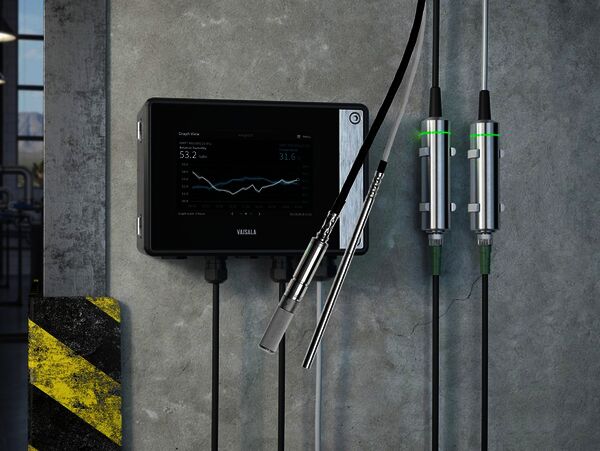The Vaisala Indigo family is a modular solution with interchangeable probes, smart transmitters, and Indigo Insight PC software. There are many probe options to choose from measuring several parameters: humidity, temperature, dew point, carbon dioxide, moisture in oil, and vaporized hydrogen peroxide. The probes can be attached to three different transmitters: the Indigo201, Indigo202, and Indigo520. But when is a probe sufficient on its own – and when do you need both a probe and a transmitter?
Indigo-compatible smart probes are based on our well established technology and include everything required to perform measurements – the probes are actually already transmitters. The Indigo-probes have been designed to take users into consideration. Small details are important, for example, standardized cables and an indicator light in the sensor body that shows if the probe is powered. The light also indicates if the communication link is working. When it starts blinking, data is transmitted successfully to the system. Think of a situation where you are installing several probes in a difficult place, like 6 m above the floor, inside a large industrial facility. How do you know that they are working? The indicator light in Indigo-compatible probes tells you both that they are working and that they are transmitting data. In a fault situation the indicator light turns red. This is one of many details that reflect the device’s high quality.
Even though the Indigo probes can be used as a standalone measuring instruments, using them together with an Indigo transmitter is highly recommended. For example, having a local display in the transmitter is useful, when something isn’t clear or there’s a problem, or when performing maintenance work in the field. Hidden costs may decrease considerably. For example, data from probes is shown on the transmitter display, allowing users to view what is going on.
If you are looking for maintenance efficiency, it’s not enough to have analog output transmitters with manufacturer-specific service cables and a technician checking measurement devices one by one. Transmitters with displays would be the only smart choice in big industrial facilities, where there may be hundreds of measurement probes. Yet another reason why the transmitter is important is viewing history data. Sometimes automation systems don’t archive data for long periods or even at all, making it good to have local data storage in the transmitter. It’s very convenient to analyze the historical data from the trend view, while inspecting process conditions in the field. The event log is also excellent for examining random process failures.
There are three Indigo transmitter options: the Indigo201, Indigo202, and Indigo520. The Indigo200 series transmitters have three analog outputs and the Indigo520 has four, which allows more signals to be transmitted into the automation system. Although some Indigo-compatible probes, such as HPP270 series probes measuring vaporized hydrogen peroxide have two analog outputs, they measure more variables. If you need three, four, or more variables in your system, you need a transmitter that has many more analog outputs.
The Indigo520 transmitter has been thoroughly tested in laboratory conditions. According to Vaisala’s testing philosophy, measurement devices are tested beyond what is required by standards. The transmitter is exposed to different temperatures, humidity levels, salt fog, UV light, mechanical shocks, and vibrations until it fails, providing genuinely reliable insight into what the product can tolerate in the field. Based on this we can guarantee the specifications of the device are tried, tested, and true.
When using the combination of transmitter and smart probes, they are also easy to detach and send for calibration without having to remove the transmitter. A laboratory-calibrated replacement probe can be attached to the transmitter, which minimizes downtime considerably.
